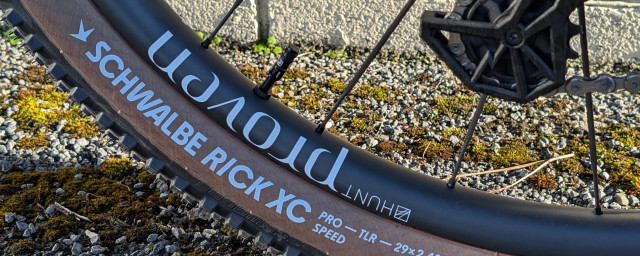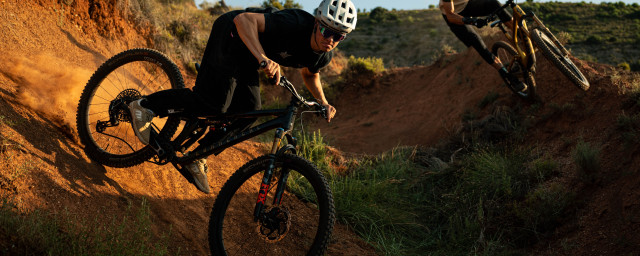SRAM MTB drivetrains 2025: SX to XX SL explained

SRAM is a prominent player in the drivetrain and braking space and a brand that is constantly on the hunt for innovation. SRAM offers a drivetrain at almost every price point. In this guide, we'll break each of its offerings right down to the bare bones and tell you exactly what they're all about so you can confidently upgrade or buy your next SRAM drivetrain.
- SRAM SX vs NX – budget Eagle drivetrains explained
- SRAM NX vs GX: which drivetrain is best for you?
- SRAM mountain bike brakes 2023 - Level, G2 and Code models
2023 SRAM drivetrains
- XX Eagle SL Transmission
- XX Eagle Transmission
- XO Eagle Transmission
- GX Eagle Transmission
- S1000 Eagle Transmission
- XX1 Eagle
- X01 Eagle
- GX Eagle
- NX Eagle
- SX Eagle
- Jargon buster
XX Eagle SL Transmission - £2,355 to £2,890
XX Eagle SL Transmission sits at the top of SRAM's drivetrain range. It's the most expensive but also the most technologically advanced bit of kit available. The XX Eagle SL Transmission is aimed specifically towards cross-country racers and gets the lightest weight construction out of the whole Transmission range and a build that SRAM says is pared down to its purest form.
This drivetrain is equipped with Magic Wheel - a jockey wheel with teeth that rotate separately from the centre. This means that the teeth keep turning even if something were to lodge itself between the cage and the pulley wheel.
The XX SL crankset comes with a hollow-core carbon fibre design, it's power meter ready and apparently, the lightest ever crankset that SRAM has created. It can also be bought with a Quarq power meter integrated. XX SL isn't built for use on e-bikes.
Continuing with the lightweight theme, the XX SL's cassette is said to be SRAM's lightest ever cassette and it's built using an all-aluminium Spider Cog for the smallest three cogs, while the remaining nine cogs are made using a hardened steel architecture. Across its 520% range is SRAM's X-SYNC tech that allows for shifting under load and there's a Setup Cog that's denoted by the red ring.
As expected of a SRAM cassette, it attaches to a wheel via an XD driver body. The brand also says that there's improved gear progression with the 44 and 48 cogs. A theme found on all T-Type cassettes is that it uses a 55mm chain line that's said to reduce wear and boost precision.
XX Eagle SL uses a flattop chain with lightweight, cut-out outer plates.
Finally, like the whole of the T-Type line, this drivetrain uses the Pod Ultimate remote.
XX Eagle Transmission - £2,195 to £2,465 - e-MTB from £1,530
XX gets a lot of the same features as the XX SL groupset but it leans a little more into durability. You get replaceable skid plates on the derailleur, and the robustness comes at the expense of a few grams.
Where things really change is with the crankset. The cranks are carbon with a foam core to boost their strength and stiffness. This crankset also features removable and replaceable bash guards that are mounted directly to the chainring. It is also available with a Quarq power meter built in.
The cassette gets almost all of the tech found on the XX SL model but its construction is slightly different as it's built with an X-Dome design with a stamped steel 38 and 44t cogs that are pinned to an alloy first gear (smallest sprocket). Controlling the shifting is a Pod Ultimate remote.
SRAM claims the XX chain is the strongest ever made and it gets a longer-wearing hard chrome finish with hollow pins.
XO Eagle Transmission - £1,715 - e-MTB from £1,240
XO Eagle Transmission amps up the durability again and allows for more at-home maintenance, although a lot of the tech found on the derailleur is similar to the rest of the range. Found more commonly on enduro steeds, the XO Eagle gets an Overload clutch, like the rest of the lineup but also a replaceable B-Knuckle cover and outer link.
SRAM says that the XO crank is the most advanced aluminium crank that it has ever made and offers a perfect stiffness-to-weight ratio. It's power-meter-ready and comes with optional bash guards.
The XO cassette brings some changes as this time it is fully approved for use on e-MTBs and it gets a Dark Polar finish complete with an electroless nickel plating to fend off corrosion. This cassette is made fully with an X-Dome construction.
The XO chain also comes with a bold strength claim and a flat-top profile.
GX Eagle Transmission - £1,180 - e-MTB from £1,015
GX Eagle Transmission is the newest kid on the block that benefits from the classic trickle-down tech. However, with this one, things look very different as the mech's battery is located at the very top. It then gets a replaceable outer link and skid plates and its cage can be removed without the need for tools.
The GX T-Type crank gets a forged aluminium build to pair performance with a reasonably lightweight and there are also removable bash guards. There's a separate e-MTB crankset available.
As for the cassette, the GX T-Type gets a lot of the stuff we've seen on the pricier drivetrains but it utilises a PinDome construction for the first eight cogs of the cassette, while the top cogs are made from a single-piece Mini-Cluster. It also gets a nickel plating for durability and for keeping the noise down.
S100 Eagle Transmission - OEM only
S1000 serves as the very entry-level into the Transmission ecosystem but it's only available specified on bikes, and it's not available for purchase aftermarket. The whole idea of S1000 is to bring the benefits of AXS Transmission drivetrains to a more accessible level and it does so by utilising the same architecture as the GX T-Type setup but with a downgrade in materials.
For example, the forged aluminium crankset comes with either a stamped steel or aluminium chain ring but can still run the integrated bash guards found on the higher-tier drivetrains. The regular crank is available in 155, 160, 165, 170 and 175mm lengths as is the e-bike crankset that also comes in SRAM, Brose, Bosch and ISIS variants.
The S1000 derailleur is almost uncanny compared to the GX sibling and it benefits from all of the advantages that T-Type can offer. So it's a modular derailleur with replaceable skid plates and a removable cage assembly. The only significant difference here against GX is that S1000 uses SRAM's Drag Spring Cage Damper clutch and we're told that the cage is made of a different material.
Lastly, the XC-1270 cassette introduces a few things that we're yet to have seen on a T-Type drivetrain. It gets a nickel chrome finish but interestingly, it receives a replaceable gear cluster with gears eight to 12 being replaceable. This cassette can also fit on HG or splined freehub drivers, providing SRAM's full 10-52T range thanks to how the 10t cog and lock ring has been arranged. Better yet, we can expect this cassette to be available to buy aftermarket.
All of this is compatible with the rest of the Transmission ecosystem.
XX1 Eagle - From £1,349
XX1 is SRAM's top-of-the-range non-Transmission drivetrain and it's been created using the lightest materials making it an ideal choice for those competing in the cross-country circuit and has brought a number of riders to the top spot at elite levels. It's available both with SRAM's AXS wireless shifting tech, and standard cable actuation but there are some key differences between the two setups.
The first of which is that the AXS version of XX1 gets a shorter pulley cage for better ground clearance, 10mm to be precise. There's also more chain wrap around the cassette which allows the derailleur to sit further forward and inboard the bike than the mechanical model.
This mech has been tested to IP69K water and dust proofing standards. XX1 AXS gets SRAM's X-Horizon tech with a straight parallelogram that limits horizontal movement which is said to stop ghost shifting while reducing the force needed to shift.
The AXS and mechanical XX1 groupsets come with different shifters, the former offers a choice of the single-paddled controller, or the AXS Rocker Controller that comes with more paddles. The latter's shifter gets carbon triggers and there's a single-click e-bike-specific shifter on offer.
As for the mechanical mech, its cage geometry has been tweaked for chain retention and better shifting. It then uses X-Actuation that we're told keeps shifting sharp and consistent up and down the cassette.
Then for the similarities, both mechs benefit from Cage Lock and a roller bearing clutch.
XX1's Eagle DUB SL Crankset uses SRAM's DUB tech to blend lightweight, stiffness, and strength within a carbon fibre construction. It then comes with an X-SYNC 2 chainring for quiet performance and better mud clearance. Only the AXS version offers a choice of a power meter crank.
Both drivetrains also use the XG-1299 Eagle cassette that provides a 520% range over a 10-52T span. It uses SRAM's X-Dome construction and fits a wheel using the XD driver body.
For those looking to upgrade to wireless shifting, SRAM also offers XX1 AXS as an upgrade kit.
SRAM XX1 Eagle is compatible with all non-T-Type components
X01 Eagle - From £1,225
X01 Eagle shares a lot of the tech that XX1 has but brings it to a slightly friendlier price point and better suits it towards enduro and trail riding. Like XX1, X01 is available in AXS and mechanical models.
Similar to XX1, the X01 AXS derailleur comes with a shorter cage for 10mm more ground clearance. It's also able to protect itself thanks to its Overload Clutch which allows the mech to disengage the motor's gearbox to give it free movement under impact It's then water and dustproof with IPX7 certification.
The mechanical X01 mech is almost identical to that of XX1 but gets a different colour.
X01 uses the XG-1295 Eagle cassette that's made using X-Dome and offers 10-50T cogs and a 500% range.
Available in two colourways on the mechanical drivetrain, both share the same X01 Eagle DUB crankset. SRAM says that this is the strongest crankset in the Eagle ecosystem while also keeping the weight low. It's made from carbon with a proprietary layup and comes with Boost spacing - which means the drivetrain has been offset to equalise the cassette's movement.
As for shifters, the AXS model gets the same controllers as XX1 but the mechanical drivetrain gets forged aluminium triggers.
SRAM X01 Eagle is compatible with all non-T-Type components
GX Eagle - £520 - Upgrade kit £584
GX Eagle is designed to offer excellent performance at an achievable price point, it's also an accessible choice to those who want to give AXS wireless shifting a go thanks to the upgrade kit.
The GX AXS derailleur also benefits from the Overload Clutch that disengages its gearbox under impact for a bit of protection. The mechanical mech gets an updated cage architecture for better chain retention and shifting.
Setting itself apart from the rest of the range, GX offers a choice of carbon and alloy cranksets. The carbon cranks get SRAM's own carbon layup and are compatible with any 1x drivetrain. They also use the brand's DUB technology that offers a uniform approach to bottom bracket fitment. The alloy crankset is designed to deliver consistent performance during each ride.
This drivetrain utilises the XG-1275 Eagle cassette with a 520% range over 10-52T gears. It's constructed with Full Pin technology that consists of steel cogs that are joined together with stainless steel pins. It uses a similar design to the X-Dome construction that allows for mud clearance.
GX Eagle is compatible with all non-T-Type components
NX Eagle - £384
NX Eagle brings effective 1x12-speed shifting to an even more welcoming price.
Its derailleur incorporates an X-Horizon design and a Type-3 Roller Bearing Clutch complete with a Cage Lock. It gets a larger 14-tooth lower pulley to accommodate 11 to 50 and 10-to-50Tcassettes.
The NX Eagle crankset gets the same X-Sync 2 profile chainring found on the pricier models but its cranks are made with 6000 series forged aluminium. There is also a DUB-compatible version available.
This setup comes with the PG-1230 Eagle cassette and offers a wide range with an 11 to 50 spread and PowerGlide II tech. This cassette does not fit XD freehubs, instead, it'll work with HG.
SRAM NX Eagle is available with trigger, or grip shifters and is compatible with all Eagle components apart from T-Type.
SX Eagle - £276
SRAM SX Eagle is the most budget-friendly drivetrain in the brand's lineup but it still uses many of the features found on others such as the X-Horizon design that can accommodate either 11-50T or 10-50T cassettes. It benefits from X-Sync pulley tech for crisp shifting and gets a Cage Lock.
The SX crank uses the X-Sync 2 chainring profile for chain retention and it is compatible with DUB technology.
As for the cassette, SX comes with the PG-1210 Eagle that fits HG freehubs at the expense of the 10T smallest gear. Instead, it's 11 on this cassette.
Jargon Buster
What is Transmission?
Transmission is the current cutting edge of SRAM drivetrain technology. It sets itself apart from regular drivetrains as it doesn't come with a mech hanger, which is a sacrificial component that joins the derailleur to the bike frame. Instead, it mounts directly to the UDH (Universal Derailleur Hanger).
What is Eagle?
Eagle represents SRAM's 12-speed drivetrains. If the drivetrain has 12 gears and it comes from SRAM, it's Eagle.
What does AXS mean?
If you see a drivetrain or component with AXS in its title, it means that it operates electronically without cables. Instead, it uses a Bluetooth connection between the shifter and the mech. AXS and mechanical derailleurs are not the same and AXS comes with a special gearbox and other tech to make it work. And you cannot take your mechanical mech and upgrade it to AXS. You'll have to buy a new AXS derailleur.
What is UDH?
UDH of Universal Derailleur Hanger is exactly what it says on the tin. It's SRAM's answer to derailleur hanger compatibility by standardising a component that was unique to each model and brand of bike. Since its release in 2018, it's become the most prominent derailleur hanger in use today and the days of going to a shop only to find that they don't stock your bike's particular hanger are over as if you've got a bike that can fit UDH, you can buy and replace any UDH hanger.
Though UDH has become particularly important recently as it's what SRAM's Transmission drivetrains use to mount the derailleur.
What is X-Dome construction?
X-Dome construction is a method of building and joining a cassette together. Using X-Dome, SRAM creates a cassette with shapes and holes that are designed to encourage mud clearance which should mean more consistent and precise shifting.
What is Cage Lock?
Cage Lock is a very handy button found on SRAM derailleurs that allows the rider to lock a derailleur's cage in the forward position. This makes it easier to remove and install a rear wheel. Simply pushing the cage forward slightly unlocks it and makes the derailleur return to its usual configuration.
What is a Type-3 Roller Bearing Clutch?
SRAM's Type-3 Roller Bearing Clutch is designed to resist the derailleur cage's tendency to move forward while riding over bumps but without limiting backward movement. This design helps with chain retention on the chainring. So when riding quickly over rocky terrain, for example, the derailleur will keep tension on the chain in order to keep it from dropping off of the chainring.
What is X-Actuation?
This refers to SRAM's mechanical drivetrains and it's how much a shifter's pull on the cable moves the derailleur. In SRAM's case, it's a 1:1 ratio where the amount of cable pulled by the shifter is the same as the distance that the derailleur moves per press on a shifter's paddle.
What is X-Horizon?
Being found on SRAM's new 1x drivetrains, X-Horizon is a technology that's designed to eliminate ghost shifting (the drivetrain shifting by itself) thanks to a straight parallelogram derailleur design. This design helps ensure steady horizontal movement of the chain. This also includes the offset X-Sync pulley design that maintains a consistent chain gap.
What is X-Sync?
This refers to the shape of the teeth on all drivetrain components, so that's the chainring, the jockey wheels, and the cassette. Eagle drivetrains use X-Sync 2 which uses a more aggressive shape that's said to better retain the chain, and reduce wear, friction, and mud build-up.


















